|

Find us on

Facebook
Ko-Koro
Kempo
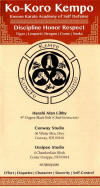 |
Students "Need to Know"
♦ ♦ ♦
What to bring
to every class
How to tie
your belt
The Four A's
The Five Animals
The Five
Rules
Belts
The Patch
United We Stand
(U.W.S.)
Counting in Japanese
Karate Terms
Beginning of Class Terms
(Spoken by the
highest ranking students)
Other Terms
Basic Exercises
Tournament
Protocol
The 5 Tips For Rank Testing
Culture in the
Martial Arts
What
to bring to every class
|
|
Full Gi |
|
|
Belt |
|
|
Sparring Gear
-
(we have some used gear at the dojo if you don't have
your own yet) |
|
|
Water |
|
|
Mouth guard |
|
|
Athletic cup for guys |
Top of Page
|
The Four A's
|
|
Attitude |
The way you think and feel about someone or
something.
A feeling or way of thinking that affects a
person's behavior. |
|
|
Adrenaline |
Is a source of energy that we tap into each
time we develop the three A's. |
|
|
Awareness |
This is the key to our inner selves, the
Arts help us be more aware of who we are and
can become. |
|
|
Ability |
Training in the Martial Arts gives us the
ability to master our own destiny. |
Top of Page
|
The Five Animals
 |
|
Dragon |
|
Fighting
Spirit, Whipping motion, and wisdom.
|
 |
|
Tiger |
|
Forward
driving attack, Aggression, Endurance,
Tenacity. |
 |
|
Leopard |
|
Power, Speed,
Agility, Ability to move quickly and easily. |
 |
|
Crane |
|
Balance,
grace, longevity, circular motion, fluid and
evasive movement. |
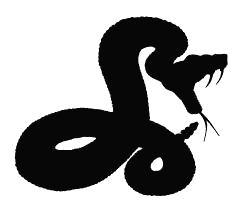 |
|
Snake |
|
Ability to
move in and out of your opponent, patience,
flexibility, and deceptive movement. |
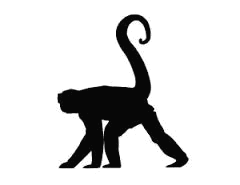 |
|
Monkey |
|
(the infamous, most-annoying, sixth animal) |
Top of Page
|
The Five Rules
|
|
Effort |
Putting
forth your best, trying as hard as you can
at all times.
|
|
|
Etiquette |
Manners, be
polite at all times to one another. |
|
|
Character
|
Personality, the sum of the qualities making
up an individual.
|
|
|
Self-Control |
Having
control of one's own body and emotions. |
|
|
Sincerity |
Honesty,
being trustworthy, truthfullness. |
Top of Page
|
Belts
In order for students to advance
to the next belt rank, they must take a belt test. The
belt tests are twice a year and are done as a group, at our
school, organized by the instructors. Belt testing
teaches students to set and reach goals, a valuable skill in
everyday life. Belt testing also teaches that with
intense effort, training and practicing, students are
rewarded with being able to demonstrate their techniques and
skills with their best efforts, which enable them to
progress forward with their goals. New belts are
earned and confidence is built.
 |
White |
New student.
|
 |
Yellow |
Yellow is the symbol of the first rays of
the sun. Yellow is a symbol of energy.
A student earns a yellow rank by allowing
his mind to be open to the knowledge of his
instructors, and putting forth effort in
his/her learnings.
|
 |
Orange |
MI-SO-NO-KORO
Orange is a symbol of the beginning of the
increasing knowledge will endure as they
grow in technique and start to enter the
path to the martial arts mountain. The
Orange-belt student begins to develop both
physically and mentally in his/her
discipline. |
 |
Purple |
Purple is a symbol of mountains and steep
path they present. As the student
moves on to higher levels of achievement, he
has difficult tasks that he/she may face.
Purple can also represent the sky at dawn, a
symbol of the change that a student
undergoes as he transitions to the next
levels in their training.
|
 |
Blue |
The blue belt is a symbol of the sky or
water. The blue belt student must
focus on smoothing out his material so it is
like the water flowing. One of the
most powerful forces on earth is water and
with its smoothness
comes a true power of smoothness.
|
 |
Green |
The green belt signifies growth. Now
the student must combine the smoothness of
water and mix it with the hardness of the
jade rock. A firm foundation of the
martial arts knowledge on which to build as
they practice and refine their skills to be
pangonoon.
|
 |
Red |
A red-belt student must learn to practice
caution and control in the use of his
abilities. The red belt is a symbol of
learning to control power. The red
rank is used when a student has accomplished
all the physical aspects needed to move to
the next rank, but the student still needs
to hone the mental skills it takes to earn
the next rank, which is the brown belt.
|
 |
Brown
| | | | |
The brown-belt student is gaining the
maturity necessary to advance to the highest
levels. He will be reaping the
benefits of his/her hard work.
There are four degrees in the brown rank.
These degrees allow the student to to
prepare for the task that comes with
upholding the rank of brown and get prepared
for the next belt level which is the black
belt.
The brown belt is a symbol of hard work in
the arts. The student working for
his/her brown rank is going to have to work
harder than they ever have worked before in
the arts. Not only will they work on
physical powers, but twice as hard on the
mental aspects of the martial arts.
The student working for the brown rank must
be able to endure the responsibility it
takes for such rank awarded. Not only
do they now have to worry about themselves,
but take on the task of guiding others
waiting for their day.
|
 |
Black
| | | | |
| | | | | |
The ultimate achievement.
The black belt, the ultimate achievement of
martial arts skills, symbolizes the
"darkness beyond the sun". Even as he
teaches others, the black belt holder
continues to broaden his own understanding,
continually seeking knowledge and
enlightenment. The student that is
being put up for this rank may now realize
that the martial arts are more than just
kicking and punching. This student may
realize that the road to becoming a black
belt is long and hard, and that progress is
more than just the color strapped around
his/her waist.
|
Top of Page
|
Counting in Japanese
(We count our exercises
in Japanese, so you will hear these words often)
English
1
2
3
4
5
6
7
8
9
10 |
Japanese
ichi
ni
san
shi/yon
go
roku
shichi/nana
hachi
ku/kyu
ju |
Pronunciation
ee-chee
nee
sahn
shee/yohn
goh
doh-koo
shee-chee/nah-nah
ha-chee
koo/kyoo
joo |
|
Top of Page |
|
Karate Terms
(We count our exercises
in Japanese, so you will hear these words often)
|
|
Karate |
Empty
hand or the art of fighting empty handed. |
|
|
Karate-do |
The
traditional way of karate. |
|
|
Dojo |
Place or
school where karate is taught. |
|
|
Hanshi |
A karate instructor holding a rank of 9th or 10th
degree black belt. |
|
|
Shihan |
A karate instructor holding a rank of 7th degree
black belt or above. |
|
|
Sensei |
A
karate instructor usually holding a rank of fourth
degree black belt or above. |
|
|
Sempai |
An assistant karate
instructor, usually between the rank of first and
third degree black belt.. |
|
|
Kobudo |
The use or practice of traditional Okinawan weapons
(farm tools). |
|
|
Gi |
Uniform worn by a karate student while training. |
|
|
Obi |
A belt worn to signify one's rank in karate. |
|
|
Kyu |
A rank below black belt. |
|
|
Dan |
Degree or rank of black belt. |
|
|
Karateka |
A student that practices the art of karate. |
|
|
Kata |
A
series of moves performed at various angles against
numerous imaginary opponents. |
|
|
Kumite |
Fighting another student either with weapons or
empty handed. |
|
|
Shorin-ryu Matsumura Seito |
The style of karate which you are studying. |
|
|
Kenshin Kan (Heart Fist Place) |
A place to train in karate-do for the good of
humanity. |
|
|
Okinawa Shorin-ryu Matsumura Karate and Kobudo
Federation (OSMKKF) |
The
federation that links this dojo to the main dojo in
Okinawa, Japan. This federation is headed by
Grandmaster Fusei Kise. |
Top of Page
|
Beginning of Class Terms
|
|
Japanese |
Pronunciation |
English |
|
|
Seiretsu |
say-de-tsu |
line
up |
|
|
Ushiro O Muite Gi Toh Obi O Naosu |
u-she-doe o moo-ee-tay gee
to obi o nay-o-sue |
turn
and fix your obi and gi |
|
|
Shomen |
show-men |
turn
to the front |
|
|
Seiza |
say-za |
kneel
down |
|
|
Shihan Ni Rei |
she-han
knee ray |
bow
to Shihan |
Top of Page
|
Other Terms
|
|
Japanese |
|
English |
|
|
Kioski |
|
attention |
|
|
Rei |
|
bow |
|
|
Kamai |
|
set |
|
|
Yoi |
|
ready
or prepare |
|
|
Onegai Shimasu |
(Said
at the beginning of class) |
please teach me |
|
|
Domo
Aragato Gozaimashita |
(said
at the end of class) |
thank
you very much |
|
|
Ohayo
Gozaimashita |
|
good
morning |
|
|
Konnichi Wa |
|
good
afternoon" or "good day |
|
|
Konban Wa |
|
good
evening |
|
|
Mata
Ashita |
|
see
you tomorrow |
|
|
Sayonara |
|
goodbye |
Top of Page
|
Basic
Exercises
|
These exercises are part of almost every
class. You will be responsible for these at
all testings. Those marked with an asterisk (*)
include a counter on the moves going
forward.
|
|
|
Double punch, solar plexus, left stance |
|
|
|
Double punch, solar plexus, right stance |
|
|
|
Double punch, solar plexus, ready stance |
|
|
|
Double punch, head, ready stance |
|
|
|
Sweep, punch, double bone block |
|
|
|
Cross-chest block |
* |
|
|
Single-bone block |
* |
|
|
Hand
block |
* |
|
|
Step,
double punch, solar plexus (kiai on each
second punch) |
|
|
|
Down
block |
* |
|
|
Double bone block |
* |
|
|
Head
block |
* |
|
|
Punch, snap kick |
|
|
|
Step,
single punch (kiai on each punch)
|
* |
|
|
Snap
kick, left and right stances |
|
|
|
Leg
block, snap kick (side), ready stance |
|
|
|
Side
shin kick, heels together |
|
|
|
Side
kick, heels together |
|
|
|
Front
side kick, ready stance |
|
|
|
Back
kick, heels together |
|
|
|
Roundhouse kick, fighting stance |
|
|
|
Side
kick, snap kick, left and right stances |
|
|
|
Snap
kick, side kick, left and right stances |
|
|
|
Down
block, back fast, up slow |
|
|
|
Step,
reverse punch (kiai on each punch) |
|
|
|
Double bone block, swing, jab |
|
|
|
Toe
toughening |
|
|
|
Hand
toughening |
|
|
|
Hand,
feet toughening |
|
|
|
Pushups |
|
|
|
Back
Stretch |
|
|
|
Stomach Crunches |
|
|
|
Oblique Stomach Crunches |
|
|
|
Running in place |
|
|
|
Jumping Jacks |
|
|
|
Burpees |
|
|
|
Deep
breathing |
|
|
|
|
|
|
Kiai
on all counts of five and ten. A kiai is a
forceful expulsion of air from the lungs
accompanied by a shout. However, it is not
simply a shout. The kiai helps focus energy
on your strike or block. A good strong kiai
is the sign of a focused student. |
Top of Page
|
|
|

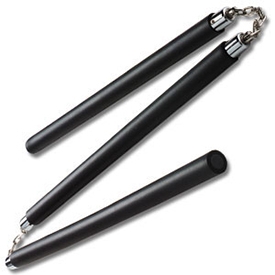



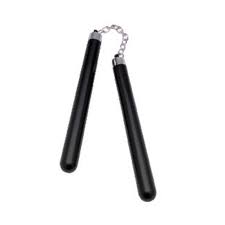 |





